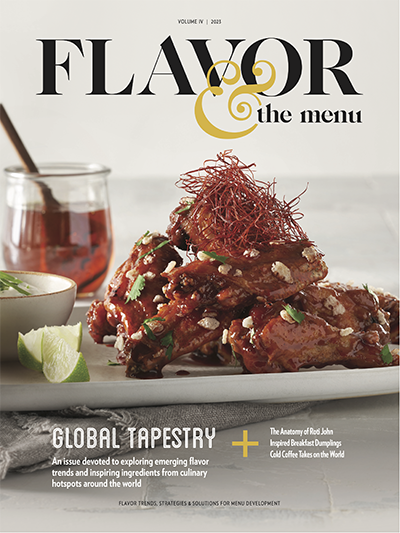
Foodservice is in the midst of a new age in menu development around plant-based ingredients. The momentum behind menu items that lean toward plant-centricity is driven by consumers’ desire to eat more plants and fueled by chefs’ inventive flavor play that makes those choices really enticing. Foodservice is also in the midst of a love affair with global flavors.
And why shouldn’t it be? It’s a big world and there are plenty of discoveries to keep the fires burning.
With both plant-centric innovation and global flavor discovery influencing menus, it makes sense that a number of chefs are looking to bean dishes from around the world for inspiration.
“Almost every culture on the planet has survived and thrived thanks to a plant-centric diet, finding unique combinations of legumes and grains, or legumes and seeds, for a higher protein make-up,” says Pam Smith, RD, nutritionist and culinary consultant based in Orlando, Fla.
“And, of course, each culture has found unique ways of flavoring and enriching those dishes.” Often, those flavoring agents were meat-based, like bacon, smoked sausage or ribs, so although these dishes celebrate beans, meat certainly plays a role here.
As we’ve seen with many “peasant” foods born from economic necessity, many bean-based dishes have emerged as iconic comfort foods, rich with flavor and steeped in tradition.
“There is a reason that just about every culture has its own take on a bean-forward dish that is bursting with singular flavor profiles,” says Travis Jenkins, R&D chef with Marlin Network, based in Springfield, Mo. “These dishes are approachable comfort foods, which make them great for operators to adapt to their menus.”
That’s the key to this opportunity—adaptation, not replication. Chefs today are looking to these storied bean-based dishes and bending them, through varying ingredient combinations or even formats, to maximize success within the confines of their brands.
Of course, the list of global bean dishes is extensive. We’ve pinpointed four that deliver craveability while also lending opportunity for signature interpretations.
1 French Cassoulet
This iconic bean stew from the South of France is slow-simmered and deeply flavored, comprised of white beans and ingredients like duck confit, salt pork, sausage and lamb shoulder. Apart from its hearty profile, today’s renewed interest in French dishes and flavors makes this worth a look, especially with an eye toward American translation. “Add a unique protein like scallops, with citrus-marinated tomatoes, brown butter and a topping of tarragon breadcrumbs,” says Jenkins.
French-inspired Tocqueville, in New York, favors seafood in its version, menuing a Butter Poached Maine Lobster Duo Cassoulet with shellfish “boudin noir” and succotash.
Maverick, a brasserie in San Antonio, Texas, cleverly moves cassoulet into brunch with its White Bean Cassoulet featuring housemade sausage, duck confit, two fried eggs, smoked cherry tomatoes and carrots.
The Mediterranean region offers variations on bean-rich dishes, like Spain’s fabada and Portugal’s feijoada, each presenting similar opportunity for translation. Bar Biscay, a Spanish and French-inspired restaurant in Chicago, serves a variety of bean dishes, from a white-bean stew special with chorizo and clams to an Asturian fabada, redolent with pork shoulder, chorizo, morcilla, pork belly, clams, white beans, saffron and mojo de ajo.
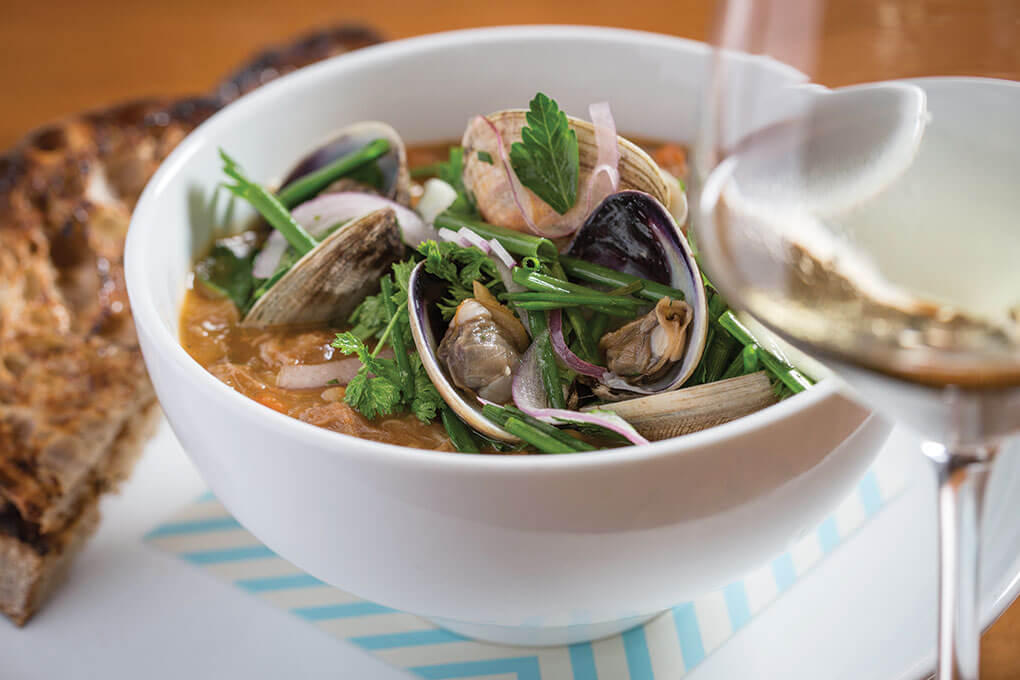 Galdones Photography
Galdones Photography Bar Biscay in Chicago runs specials like this Spanish-style white-bean stew enriched with chorizo and clams.
2 Brazilian Feijoada
A number of countries offer versions of feijoada, but in Brazil, it’s the national dish. There, typically, black beans are simmered with ingredients like salted pork or beef, smoked sausage, bacon and smoked pork ribs. The stew is often topped with vegetables and served with rice and orange slices.
Gerard Craft, consulting chef for Cinder House atop the Four Seasons Hotel in St. Louis, serves his version of feijoada as a bowl build. Much of the flavor layering happens before the ingredients are assembled. “The meats are cooked individually. The pork belly is cured for three days before being smoked, the beef is marinated in red wine before also being braised, and the pork ribs are slow cooked and lacquered with mango-honey,” he says. Local long-grain rice is flavored with garlic and herbs and is spooned into the bottom of the bowl. The black beans are cooked for four hours with rich pork stock, ham hocks, onion, bacon, citrus and butter.
The dish is topped with toasted farofa (toasted cassava), orange slices and chimichurri. “Diners are familiar with most of the ingredients in our feijoada, but perhaps not assembled together,” says Craft. “I was introduced to the dish through my childhood nanny, Dia. She had the ability to evoke a sense of comfort from simple, fresh ingredients.”
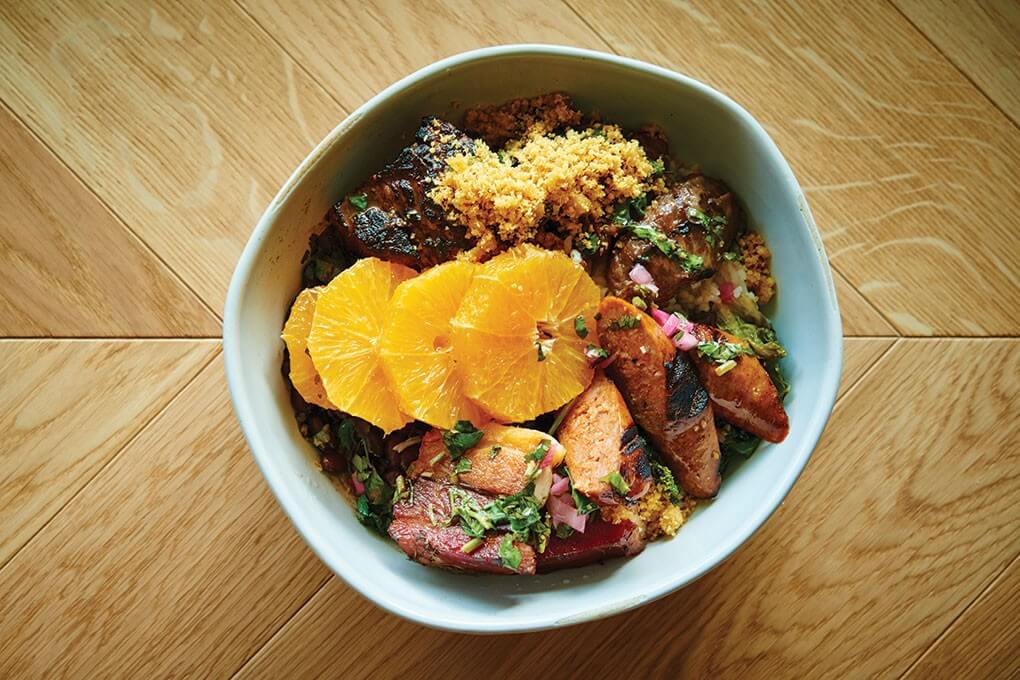 Greg Rannells
Greg Rannells Meats are cooked individually for the bowl-style feijoada at Cinder House in St. Louis. Long-grain rice and black beans form the foundation.
3 Southern Succotash
Hailing from a familiar part of the globe, this Southern staple is a bean-based dish that chefs across the country are taking liberties with. Traditionally made with sweet corn, lima beans (or other shell beans) and tomatoes, the possibilities for signature takes are endless. Pam Smith suggests moving it into breakfast. “Make a succotash breakfast bowl with beans, onion, garlic, warm spices, corn and tomato—all on top of grits, maybe finished with a piece of smoky trout. Or turn it into a modern eggs Benedict with a succotash cake as the base, poached egg, country ham, collards and a tasso hollandaise.”
At Succotash, a Knead Hospitality & Design concept in Washington, D.C., Edward Lee, culinary director, serves Succotash Curry made with sweet corn, crowder peas, lima beans, edamame, zucchini and red bell pepper, flavored with a madras curry-scented corn chowder. “I love how the sweet and creamy corn holds the aromatic curry so well, and the beans and pepper add a toothsome bite,” says Lee. “It’s one of our best sides and obviously our namesake.”
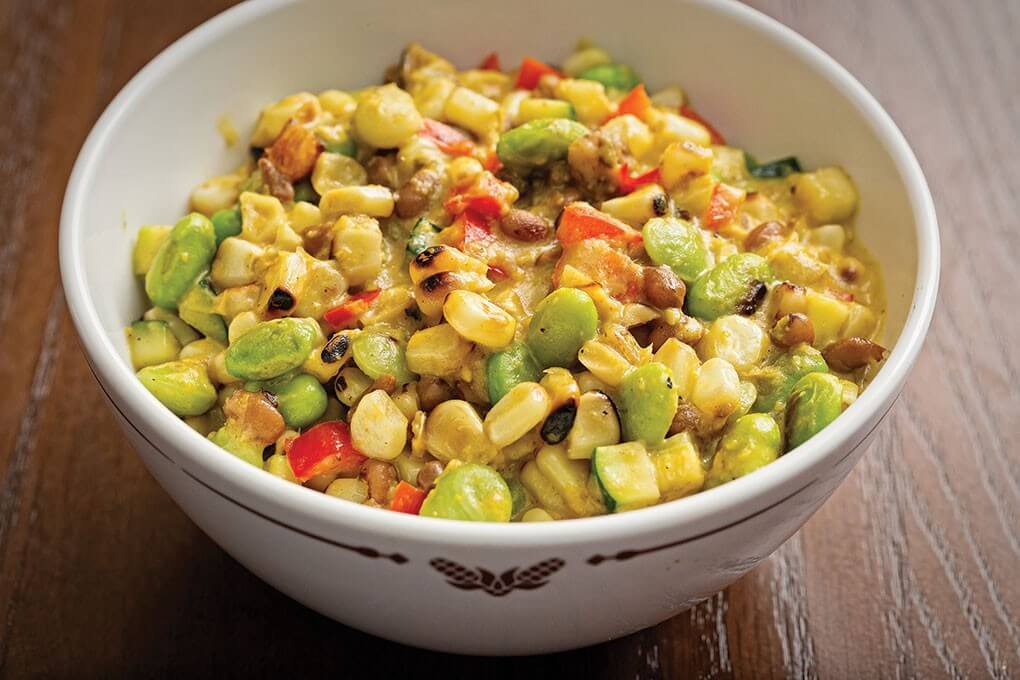 Scott Suchman
Scott Suchman Southern-style ingredients like lima beans and crowder peas combine with aromatic curry at Succotash in Washington, D.C.
4 Cuban Rice and Beans
Although countless cultures offer variations on rice and beans, here the focus is on Cuba’s version, which typically combines black beans and white rice in the same pot with sofrito, ham hock, smoked bacon, brown sugar and white vinegar. Since American consumers are familiar with Cuban flavors, this dish easily slides into a number of different formats and flavor combinations.
Jenkins suggests building it into a breakfast bowl, powered by protein-rich beans and crowned with a fried or poached egg. “You can switch out the white rice for brown for a more wholesome approach, and you can get creative on sauces and toppings,” he says. At Equelecuá, a vegan Cuban café in Inglewood, Calif., a loaded yuca fries dish is topped with Cuban black beans, “fire” agave sauce and vegan sour “cream,” dialing up flavor and wholesomeness.
Bean-centric dishes, and the creative iterations popping up on menus across the country, offer a broader opportunity than just these four examples. As always, flavor leads the way to successful menu innovation, no matter where in the world we find it.
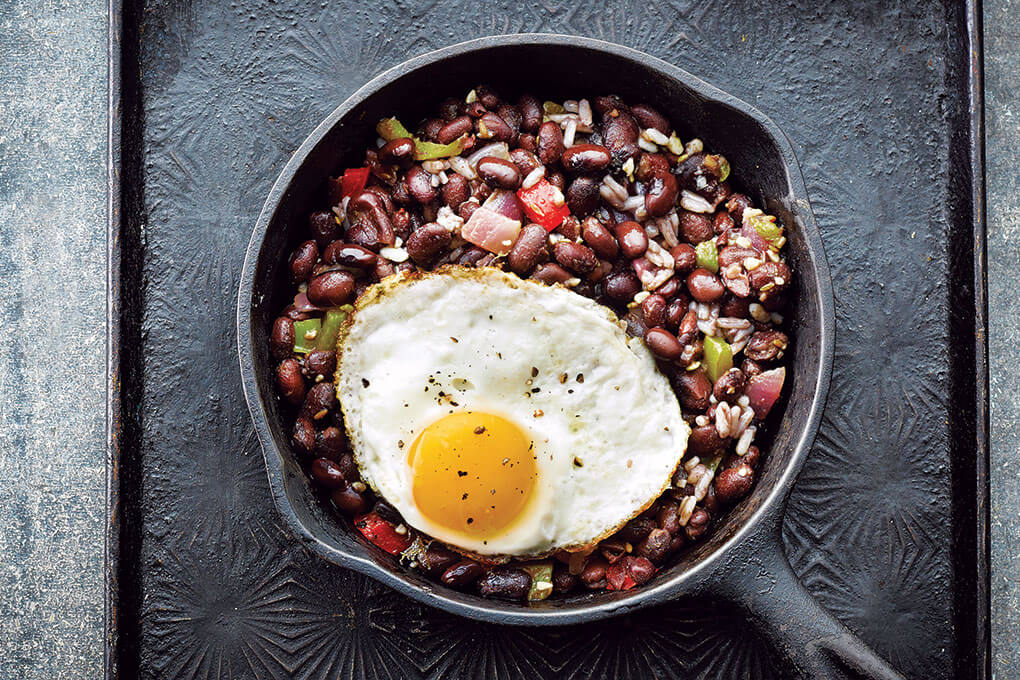 Bush’s Best
Bush’s Best Infinite interpretations of Cuban rice and beans include moving it to the breakfast menu, perhaps anchoring it in that category with a fried egg over top.

